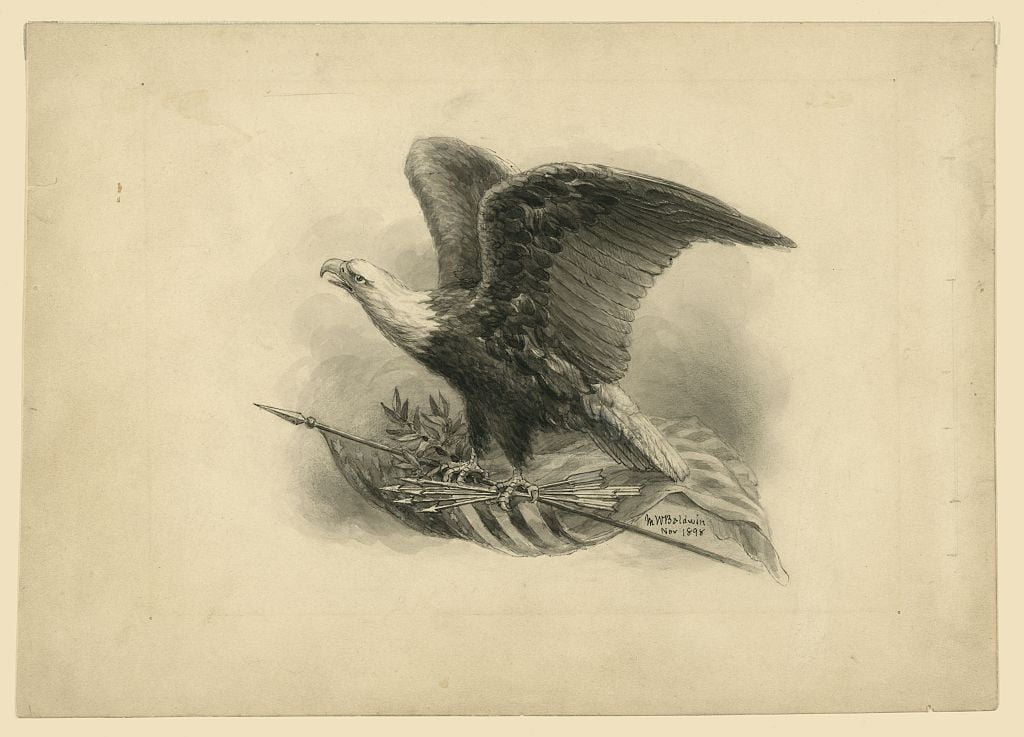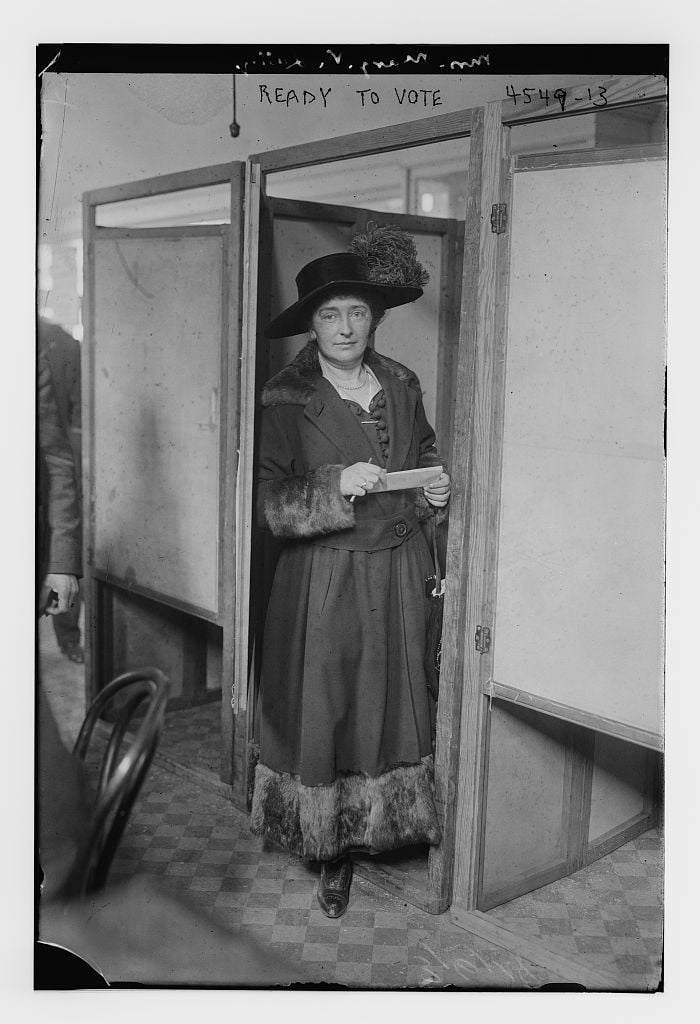Teach This Poem, though developed with a classroom in mind, can be easily adapted for remote learning, hybrid learning models, or in-person classes. Please see our suggestions for how to adapt this lesson for remote or blended learning. We have also noted suggestions when applicable and will continue to add to these suggestions online.

Baldwin, Marcus Wickliffe, Artist. American Eagle, 1898. Library of Congress.

Bain News Service, Publisher. Ready to Vote, 1918. [March 5] Photograph. Library of Congress.
-
Warm-up (quick write): Do you agree or disagree with the following statement? “Voting is important.” Explain your answer.
-
Before Reading the Poem: Look closely at two images: the print of the bald eagle here and the photograph from the first election open to women here. What do you notice about the two images? How do they make you feel? Look at both again. What else do you see?
-
Reading the Poem: Read the poem “One Vote” by Aimee Nezhukumatathil silently. What do you notice about the poem? Annotate for any words or phrases that stand out to you or any questions you might have.
-
Listening to the Poem (enlist two volunteers to read the poem aloud): Listen as the poem is read aloud twice, and write down any additional words and phrases that stand out to you.
-
Small-group Discussion: Share what you noticed in the poem with a small group of students. (Teachers, divide students into groups of four or the necessary equivalent for your classroom. Then, assign each group one of the four stanzas.) With your small group, decide what images, words, or phrases you can sketch from your assigned stanza. What are the most powerful images that you want to portray? Why? Share your sketch with the class.
-
Whole-class Discussion: Reread the epigraph at the beginning of the poem. (Teachers, if you feel like your students need more context, you might also want to give them an excerpt of this article here.) What is the significance of one vote? Why? Does this connect to anything happening now?
-
Extension for Grades 7-8: Continue reading more about the women’s suffrage movement here. Project 19 celebrates the 19th Amendment; read poetry from the project here, and watch originally composed music videos here. Write your own poem or song, or create your own sculpture, celebrating an important person in the movement. Be sure to share your creation with your classmates. (Teachers, you may wish to have students read this article as well; if you feel that your students need more context, you can find additional information here.)
-
Extension for Grades 9-12: Continue reading more about the women’s suffrage movement here. Research a contemporary activist and/or politician and write an essay that answers this question: How has the suffrage movement impacted politics today?
Encourage your students to visit Vote.org, where they can learn more about the voting process, help their parents or guardians determine their voting status and polling locations, and pledge to register to vote when they turn eighteen. Read more.
